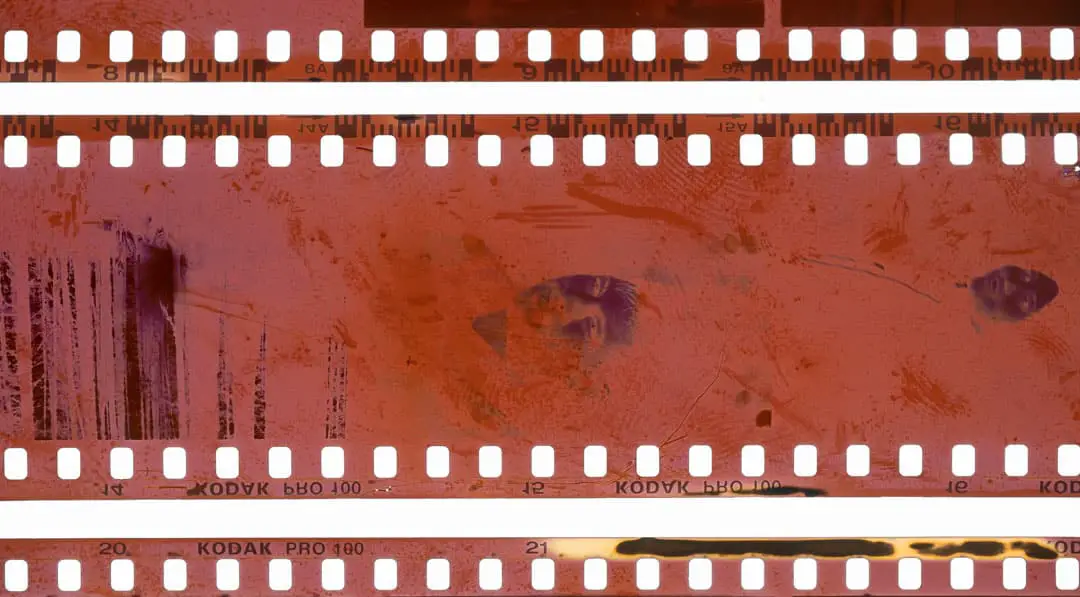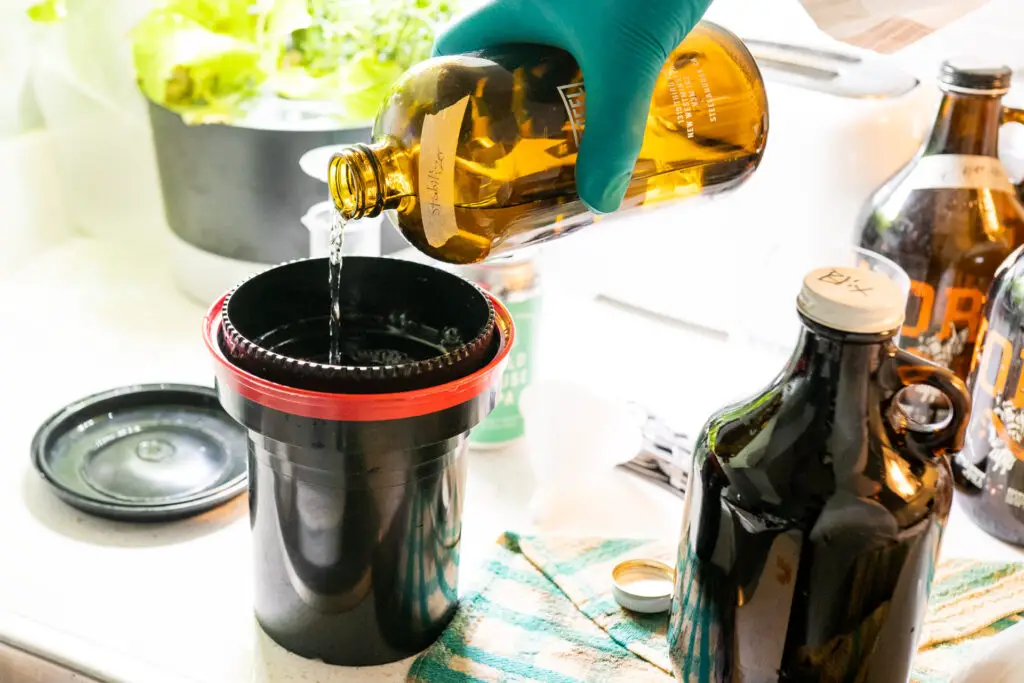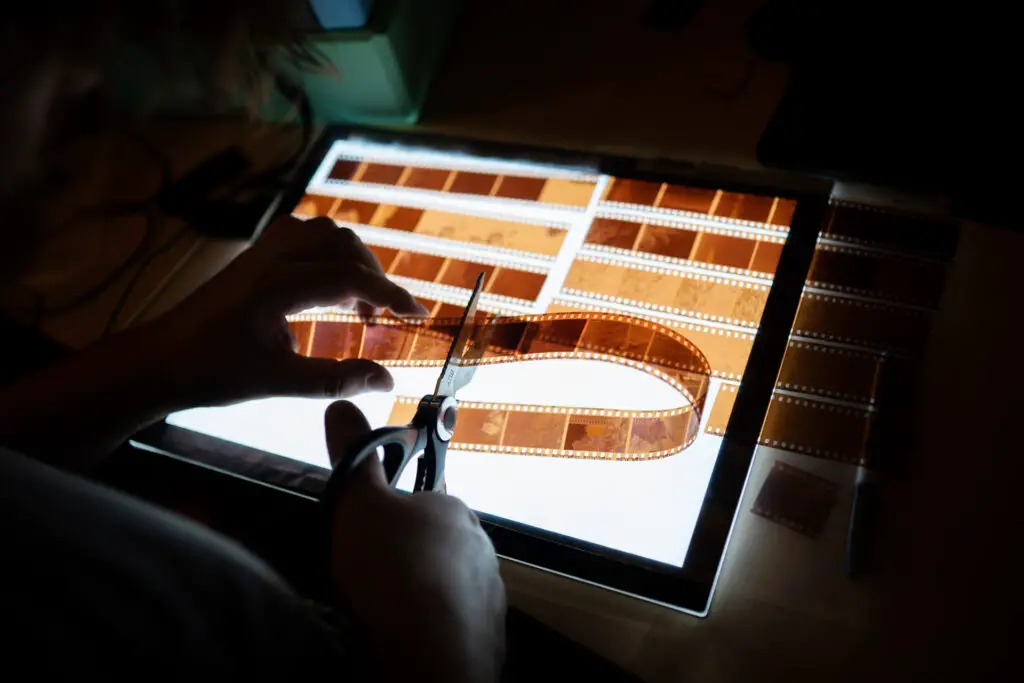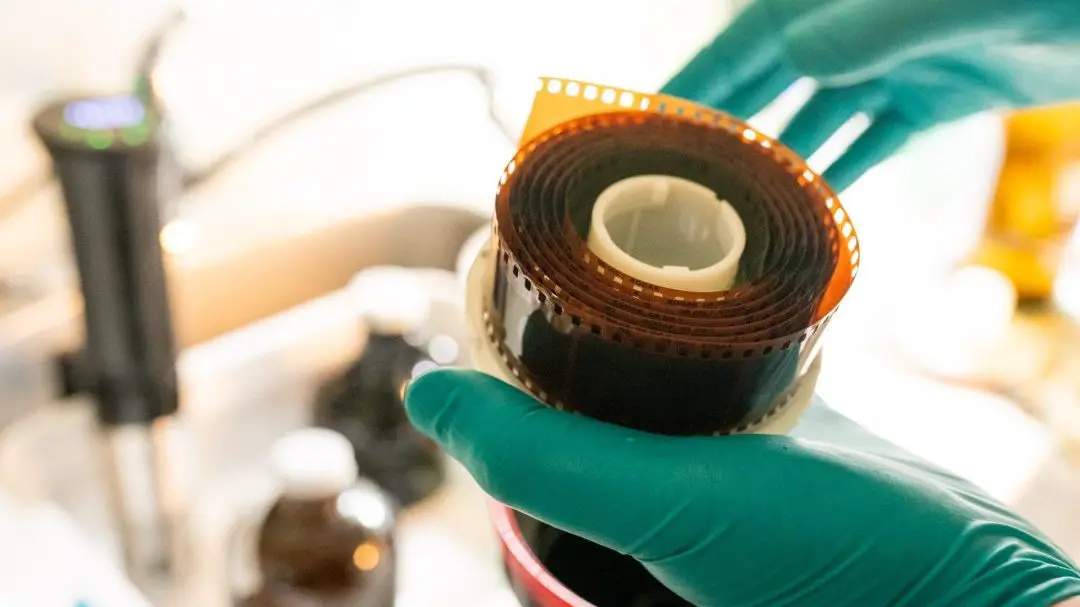Many of the film purists out there will tell you that you should always be handling negatives with gloves. But gloves can be rather annoying. They get hot and sweaty, and don’t always feel the best. Do you really need to wear gloves when handling film negatives?
As a general rule, gloves help protect the negatives from the oils on skin, which leave impossible to clean markings on film. Wearing nitrile, or lint-free cotton gloves are especially important when handling undeveloped negatives to prevent fingerprints showing in the developed negatives. But there are some ways to avoid gloves if needed.
With that in mind, I have a confession to make. I don’t usually use gloves when handling negatives. And my reasoning for that isn’t a logical one — I just don’t enjoy gloves at all. But for the amount of negatives I’ve handled, there’s only one or two that have ever gotten finger prints on them (one sample being disastrous).
To handle negatives without gloves, it’s important to never touch the film plane, especially on the emulsion side. This is much easier to accomplish with 35mm film, which is just the right width to securely pinch by the edges without folding the film. 120 is a much harder task. Load it into the reel by touching the thin strip where the negative was taped to the backing paper. If you can do this successfully, the film won’t have any problems.
The issue is when things don’t go as planned. Like in this set of negatives that were the result of a catastrophic Patterson plastic reel jam (also pictured below). If that’s a risk you’re just not willing to take, you’ll need a good pair of gloves.

What kind of gloves are recommended when handling film?
There are two camps with negative handling gloves, and they both have their own benefits and drawbacks. The two gloves are cotton and nitrile. Both of these are recommended by the Library of Congress, so you know they’re safe.
Cotton gloves have been used at museums and by photographers since preserving art became a thing. These gloves are great at keeping nasty oils off of paintings and negatives. And the best part about them is that they’re reusable. These gloves are typically designed to be machine washable (but hang them to dry) so that you can keep using them until they fall apart at the seams.
The downside of cotton gloves is that they sometimes leave lint behind. It doesn’t matter how ‘lint free’ they are, I still get a ton of dust on my film — which is actually why I stopped using these. Cotton gloves are also not useful when developing and printing film, as they’ll just absorb the chemicals and keep them on your skin instead of blocking it out. Not great.
Nitrile gloves are a newer invention, so you won’t find them recommended in as many old books. These are the same gloves that are used by doctors, surgeons, and really anyone who wants to keep chemicals and blood off their hands. They are powder-free, and one of the strongest, most flexible barriers that you can put on your skin. Unlike latest, nitrile gloves don’t break when there’s a bit of pressure in the wrong spot, making them an excellent option. They’re also great when developing and printing film.
The downside of nitrile gloves is that they’re single use and take around 100 years to degrade in a landfill.

Do I need gloves when developing or printing film?
So if you really hate gloves, you might be wondering if they’re all that necessary when you’re developing film. And there are mixed opinions here. For every photographer who uses gloves, there’s another out there with permanently black fingers who says it’s not a big deal. So really, is it that important?
Wearing gloves when developing film is advised. Most developer and fixer solutions are suspected carcinogens, and should not be in contact with skin. The best method of protection is to wear proper gloves and a lab coat to protect skin and clothing from accidental spillage.
You don’t have to look far to see why gloves are important. A study of darkroom printers in Tehran found that 80% of the users who refused to wear gloves in the darkroom developed some form of skin disease. The conditions that came from the developers include eczema, separation of the fingernail, leukoderma, and lichen planus among others. It’s not pretty.
The truth is that accidents happen even if you’re careful in the darkroom and when developing film. I can’t tell you how many times I’ve gotten fixer and developer on my hands (in the past), despite using tongs, and sealing the developing tank.
If you plan on spending a lot of time in the darkroom, the best plan is always to protect your skin as much as possible by using gloves. The best gloves to protect your skin against the developers and fixers are nitrile gloves, like these ones, which I’ve been using, on Amazon.

Should I use gloves when scanning film?
Scanning film is one of the cases where gloves can come in handy.
It’s very common to accidentally touch the film when you’re inserting and removing the film from the scanner. When this happens, you can introduce all kinds of nasty dust and dirt to the negatives. But worst of all is getting a fingerprint on the negative.
Fingerprints on the developed negatives can cause some degradation over time — especially if those fingerprints are on the emulsion side of the film. They’re also nearly impossible to clean off. As attempting to do so with a microfibre cloth can introduce more dust, or even irreparable scratches onto the film. So the best way to avoid getting fingerprints on the negatives is to always use gloves.
That said, I personally don’t use gloves when I scan negatives — unless it’s a really important roll, like from a wedding, or a paid event. In most cases, I’m able to load and unload the negatives into the scanning trays without much issue. But there are some times when I mess up, and I do accidentally touch the film. If you don’t want to wear gloves, the best thing you can do is wash your hands with soap and water before touching the film. Soap will remove most of the oils from your fingers, making it safer to handle the film.
Do you wear gloves when you develop film? What has your experience been like? Let me know in the comments below!

By Daren
Daren is a journalist and wedding photographer based in Vancouver, B.C. He’s been taking personal and professional photos on film since 2017 and began developing and printing his own photos after wanting more control than what local labs could offer. Discover his newest publications at Soft Grain Books, or check out the print shop.

